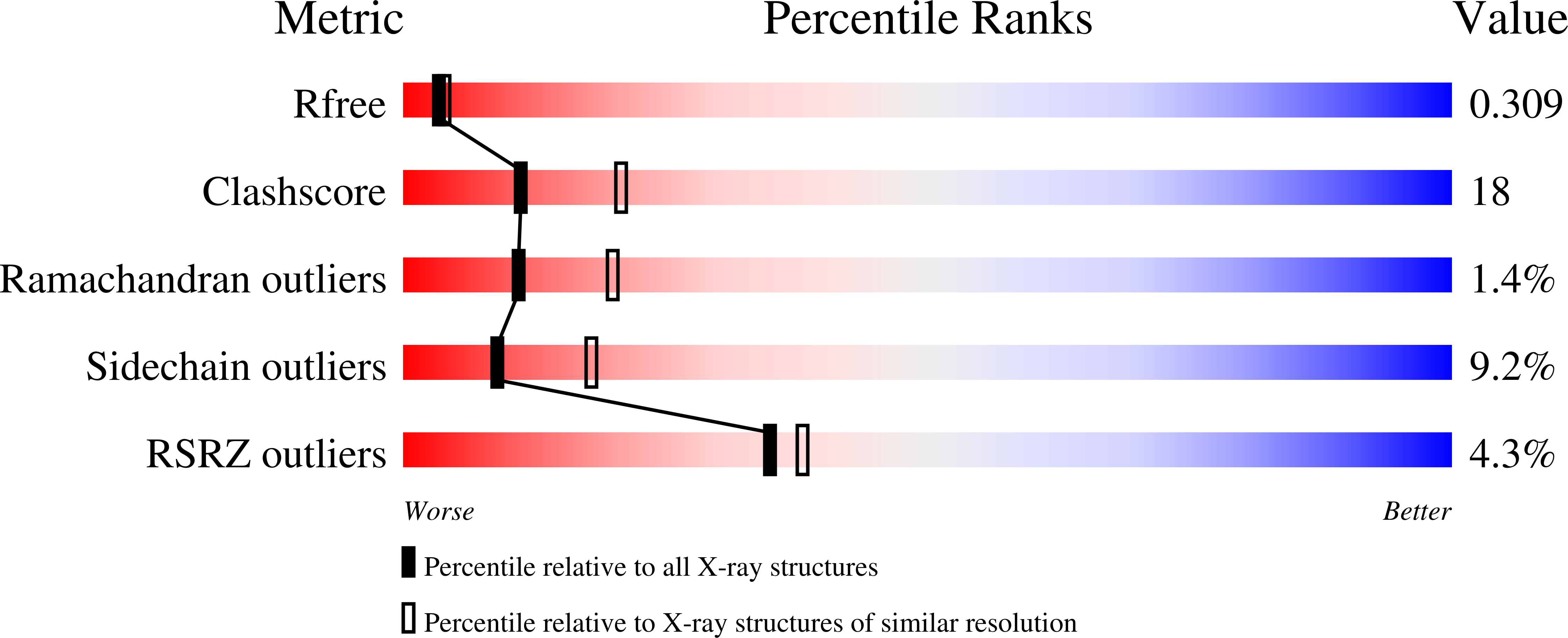The APOBEC-2 crystal structure and functional implications for the deaminase AID.
Prochnow, C., Bransteitter, R., Klein, M.G., Goodman, M.F., Chen, X.S.(2007) Nature 445: 447-451
- PubMed: 17187054
- DOI: https://doi.org/10.1038/nature05492
- Primary Citation of Related Structures:
2NYT - PubMed Abstract:
APOBEC-2 (APO2) belongs to the family of apolipoprotein B messenger RNA-editing enzyme catalytic (APOBEC) polypeptides, which deaminates mRNA and single-stranded DNA. Different APOBEC members use the same deamination activity to achieve diverse human biological functions. Deamination by an APOBEC protein called activation-induced cytidine deaminase (AID) is critical for generating high-affinity antibodies, and deamination by APOBEC-3 proteins can inhibit retrotransposons and the replication of retroviruses such as human immunodeficiency virus and hepatitis B virus. Here we report the crystal structure of APO2. APO2 forms a rod-shaped tetramer that differs markedly from the square-shaped tetramer of the free nucleotide cytidine deaminase, with which APOBEC proteins share considerable sequence homology. In APO2, two long alpha-helices of a monomer structure prevent the formation of a square-shaped tetramer and facilitate formation of the rod-shaped tetramer via head-to-head interactions of two APO2 dimers. Extensive sequence homology among APOBEC family members allows us to test APO2 structure-based predictions using AID. We show that AID deamination activity is impaired by mutations predicted to interfere with oligomerization and substrate access. The structure suggests how mutations in patients with hyper-IgM-2 syndrome inactivate AID, resulting in defective antibody maturation.
Organizational Affiliation:
Molecular and Computational Biology, University of Southern California Los Angeles, California 90089, USA.

















